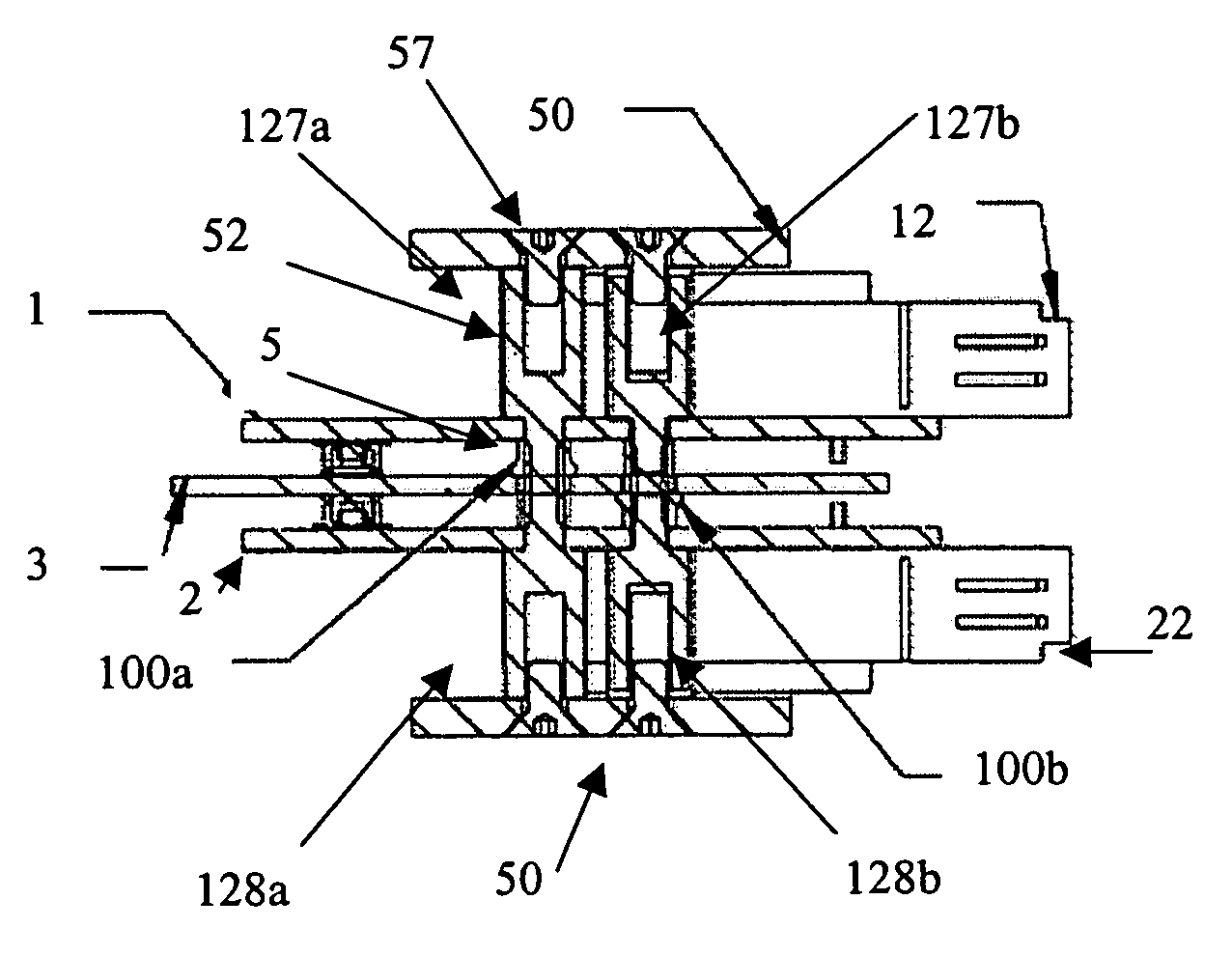Anchoring member to facilitate fastening daughter boards to a mother board and a method for use
a technology of an anchoring member and a mother board, which is applied in the direction of printed circuit aspects, support structure mounting, electrical apparatus construction details, etc., can solve the problems of increasing the amount of area, area or real estate on the mother board used by the structural element, and the inability to use other elements or purposes
- Summary
- Abstract
- Description
- Claims
- Application Information
AI Technical Summary
Benefits of technology
Problems solved by technology
Method used
Image
Examples
Embodiment Construction
[0025]Preferred embodiments of the invention and its advantages can be understood by referring to the present drawings. In the present drawings, like numerals are used for like and corresponding parts of the accompanying drawings.
[0026]As shown in FIG. 1, one embodiment of the present invention relates to a structural element and, in particular, an anchoring member, shown generally by reference numeral 100, for facilitating fastening a first daughter board 1 and a second daughter board 2 in parallel arrangement on either side of a mother board 3. The anchoring member 100 comprises, in one preferred embodiment, an elongated body 102 extending in a longitudinal direction, indicated generally by the arrow identified with the symbol Ld.
[0027]Preferably, the anchoring member 100 comprises a friction fit surface, as shown generally by reference numeral 103, for securing the elongated body 102 to the mother board 3. The friction fit surface 103 can be any type of surface which can secure t...
PUM
 Login to View More
Login to View More Abstract
Description
Claims
Application Information
 Login to View More
Login to View More - R&D
- Intellectual Property
- Life Sciences
- Materials
- Tech Scout
- Unparalleled Data Quality
- Higher Quality Content
- 60% Fewer Hallucinations
Browse by: Latest US Patents, China's latest patents, Technical Efficacy Thesaurus, Application Domain, Technology Topic, Popular Technical Reports.
© 2025 PatSnap. All rights reserved.Legal|Privacy policy|Modern Slavery Act Transparency Statement|Sitemap|About US| Contact US: help@patsnap.com



